 It is 20 years today since Australian television first entered the digital age with the commencement of digital transmission in Sydney, Melbourne, Brisbane, Adelaide and Perth.
It is 20 years today since Australian television first entered the digital age with the commencement of digital transmission in Sydney, Melbourne, Brisbane, Adelaide and Perth.
Digital television marked the most significant change in television viewing since the introduction of colour in 1975. With the advent of high definition, widescreen television, there was a lot of information to take in about the technology and the options available. Though for many, the choice was simplified by the pure expense of digital equipment. The cheapest option to access digital TV was by connecting a standard definition set top box to an analogue TV — and that would still set you back around $700.
Viewers wanting to plug in a high definition set top box could be looking at closer to a $1000 price tag, and that box would only serve to downgrade the picture to be displayed on a standard analogue TV.
For the full digital experience, such as a widescreen TV with an integrated high-definition tuner, the price was around $8000.
Government legislation also did its best to make digital TV undesirable by limiting its functionality. Commercial channels were not permitted to start up secondary channels. ABC and SBS could do so but there were strict restrictions on what those channels could actually offer. Although technology was developed to incorporate interactive features such as home shopping, this was not to form part of the digital television platform.
Networks were permitted, however, to offer multi-view channels for sports coverage. This was an option used to some extent in the early days but was not widely adopted. Networks were also not exactly leaping to provide high definition or widescreen coverage of sporting events, even though this genre seemed a perfect fit for a high-definition, widescreen format.
It is probably no wonder that digital TV was not being taken up by the wider population, and the shutdown of analogue television, then intended for 2008, was fast approaching. The government had little option but to lift some of the content restrictions and to allow commercial networks to offer multiple channels to make digital TV more desirable. This allowed a revamp of ABC2 and launch of ABC News 24, and led to the first generation of commercial channels, including 7TWO, GO!, 7mate, Gem, One HD and Eleven. SBS also replaced its World News Channel with SBS Two.
The networks also formed an alliance, Freeview, to promote the benefits of digital television content and technology to encourage a higher uptake.
In markets of smaller populations, such as Tasmania, Darwin and Mildura where there were only two commercial operators, the existing operators were given the option to operate a third digital-only channel as a joint venture. This encouraged a higher take up of digital television in these markets.
The proposed 2008 shutdown of analogue television was then postponed to be between 2010 and 2013, with markets across Australia shutting down analogue signals one by one.
By the end of the first decade of digital, all networks had established high and standard definition secondary channels and community TV was eventually allowed a piece of digital spectrum.
For more on the first decade of digital television in Australia, this post was written in 2011.
In the second decade, networks have used MPEG4 technology to squeeze more channels into their available bandwidth. The Seven Network has now added 7flix, Openshop and Racing.com, Nine has added 9Rush and shopping channel Extra, and Network Ten has launched 10 Shake and added shopping channels Spree and TVSN. Ten also shifted its long-running drama Neighbours to its Eleven channel (now 10 Peach). The show continues to be one of the channel’s best performers, though it commands a much smaller audience than it did on the main channel.
SBS has expanded to include NITV, SBS Food and SBS World Movies. It has also replaced SBS Two with SBS Viceland and converted it to high-definition. Both ABC and SBS have also added their radio networks to their digital television signals.
There have been casualties along the way. 7Food, picking up the Food Network franchise after SBS let it go, was not to last long. Nine also had only a short run of its new channel yourMoney, a joint venture with Sky News Australia. ABC2 became ABC Comedy in 2017 but it now becomes ABC TV Plus from today. Seven’s shopping and niche content channel TV4ME was also a short-lived venture. Network Ten ditched its sports channel One HD and turned it into a general entertainment channel, now 10 Bold. Experimental transmission in 3D in 2012 were also to be a one-event wonder.
But, in the beginning, to assist viewers in making choices and being informed about digital television, Digital Broadcasting Australia, a conglomerate of broadcasters, manufacturers, retailers and technology providers, released a brochure to help educate viewers:
(Click on the images to enlarge)
The Nine Network also published a brochure to help viewers along:
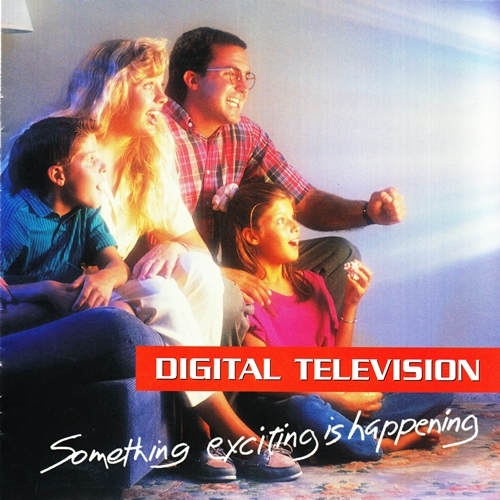
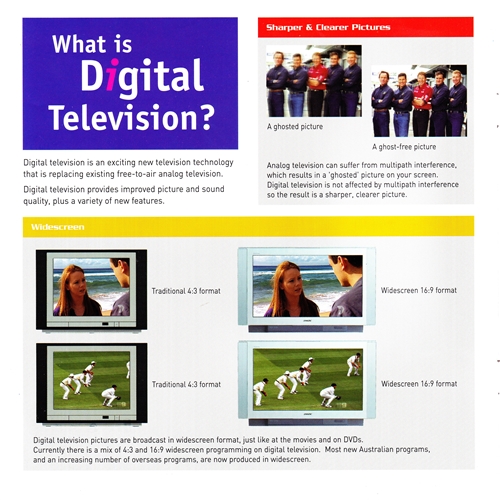

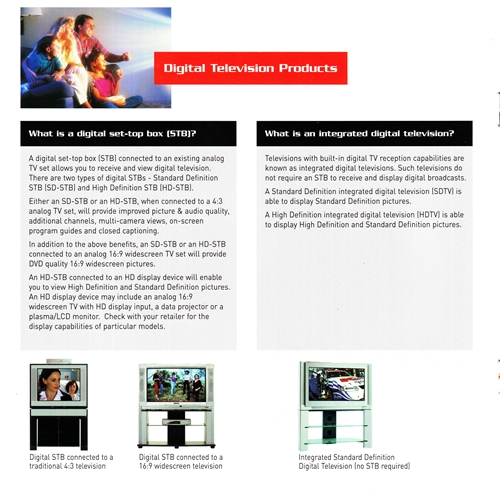

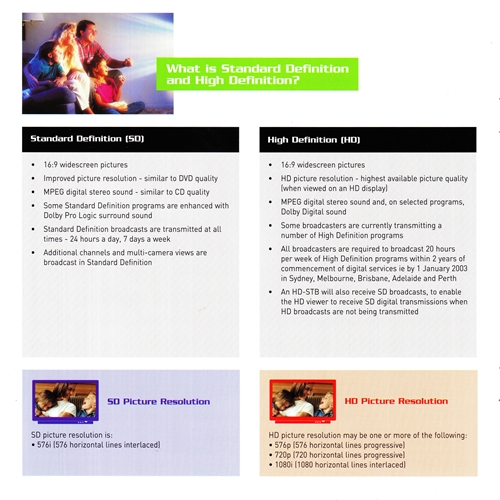
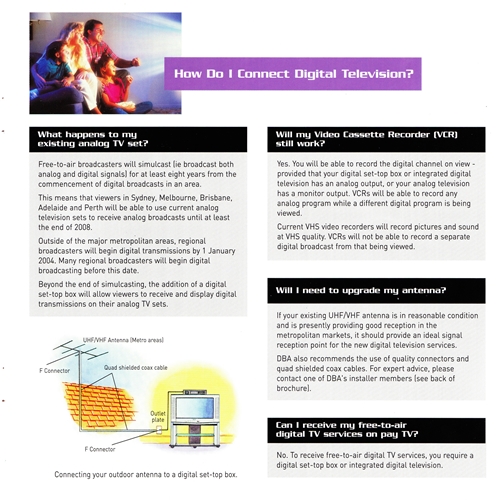
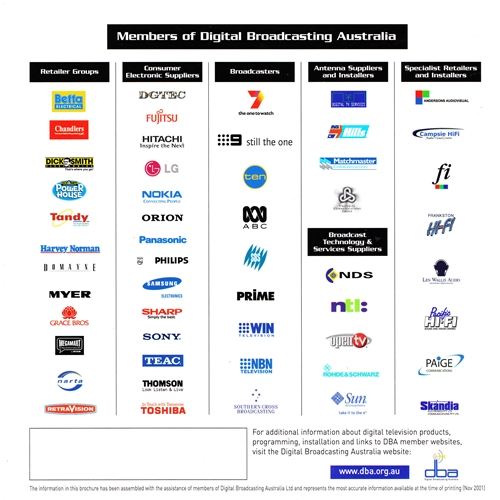
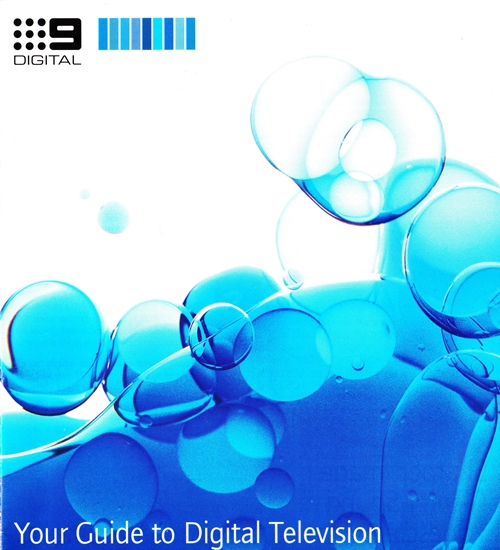
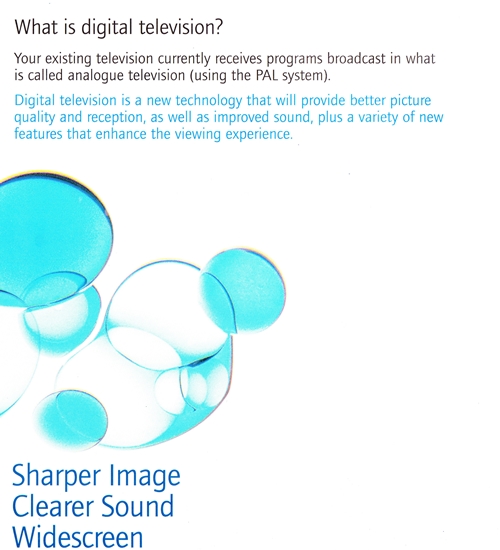

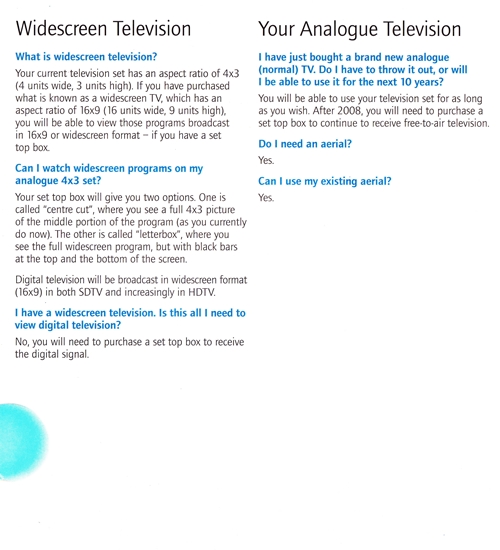

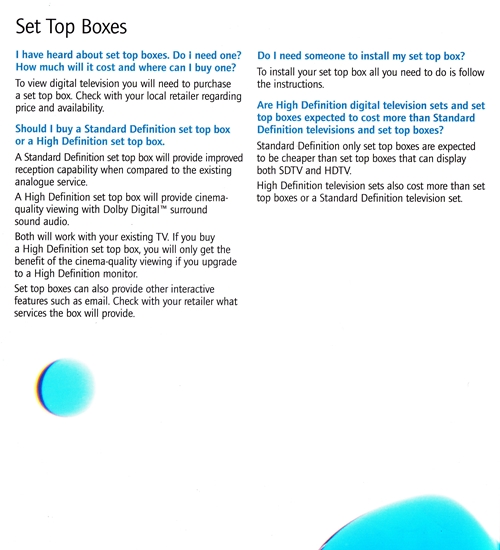
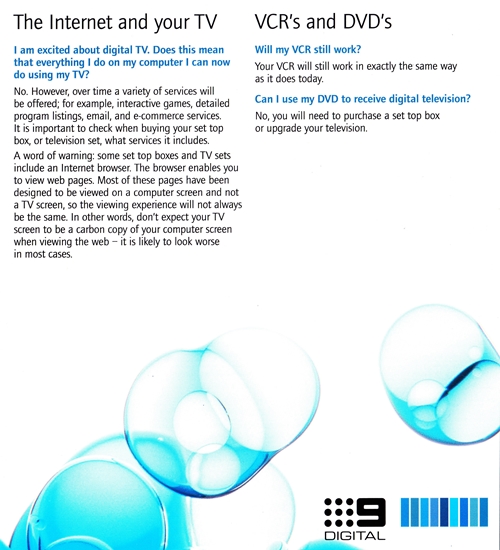
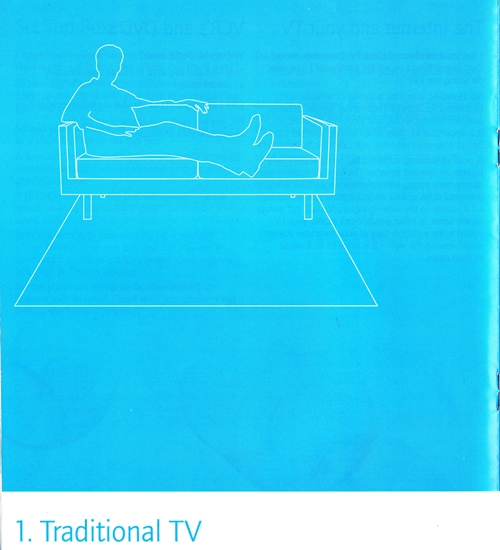
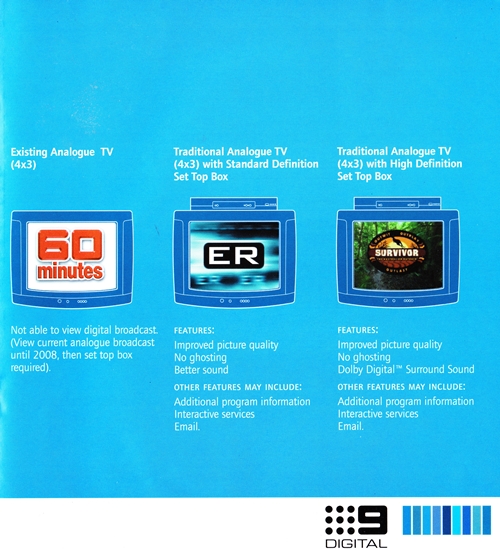
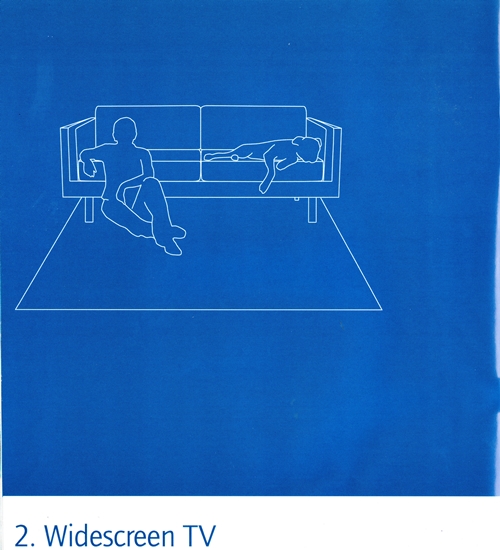
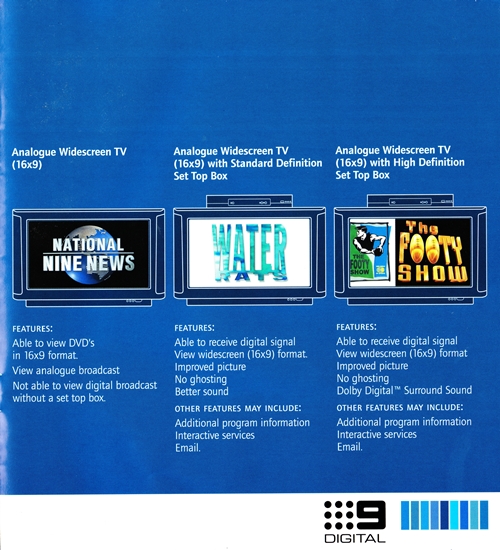
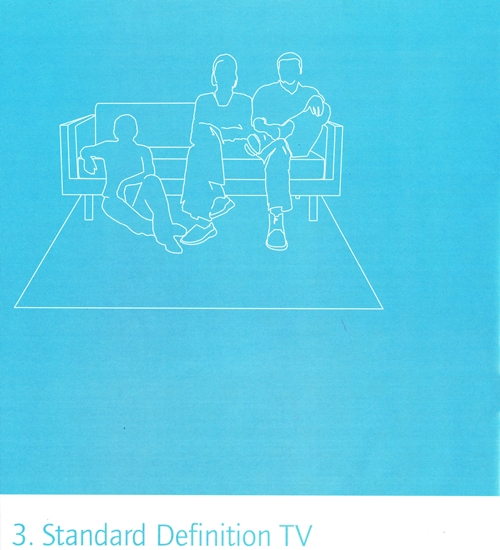
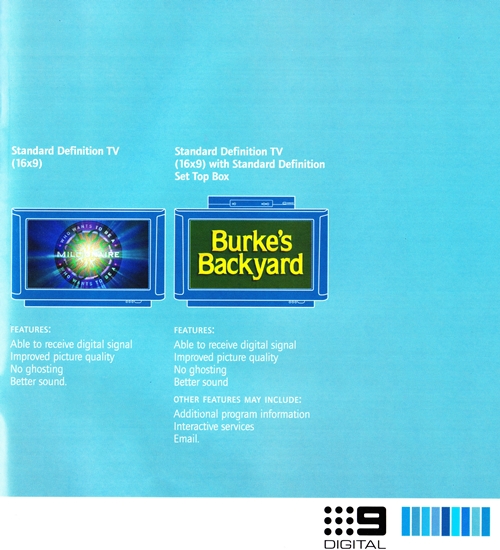
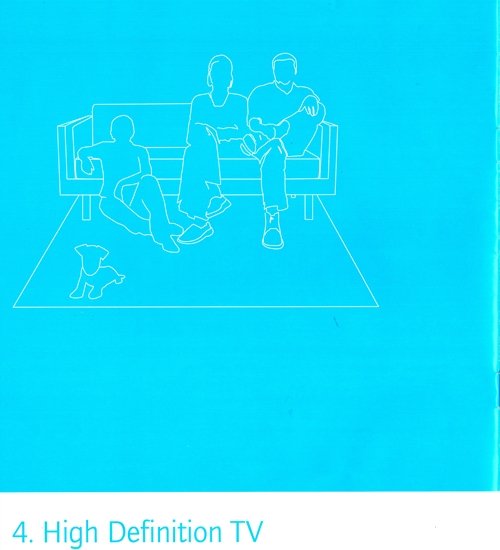
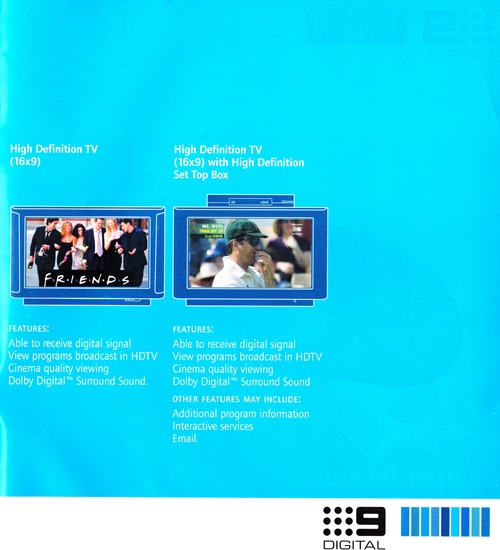
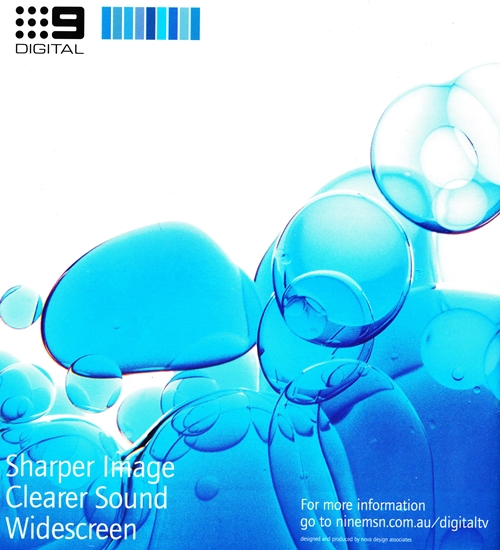
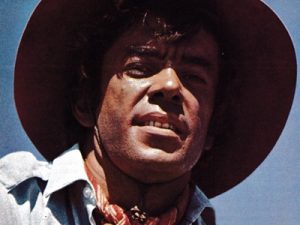
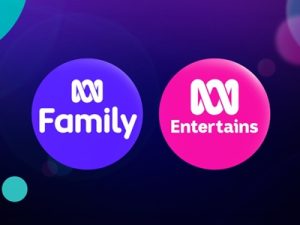







next they be broadcasting in 4K
Were there any plans to start Digital TV in time for the Sydney Olympics?
Not that I was aware of.